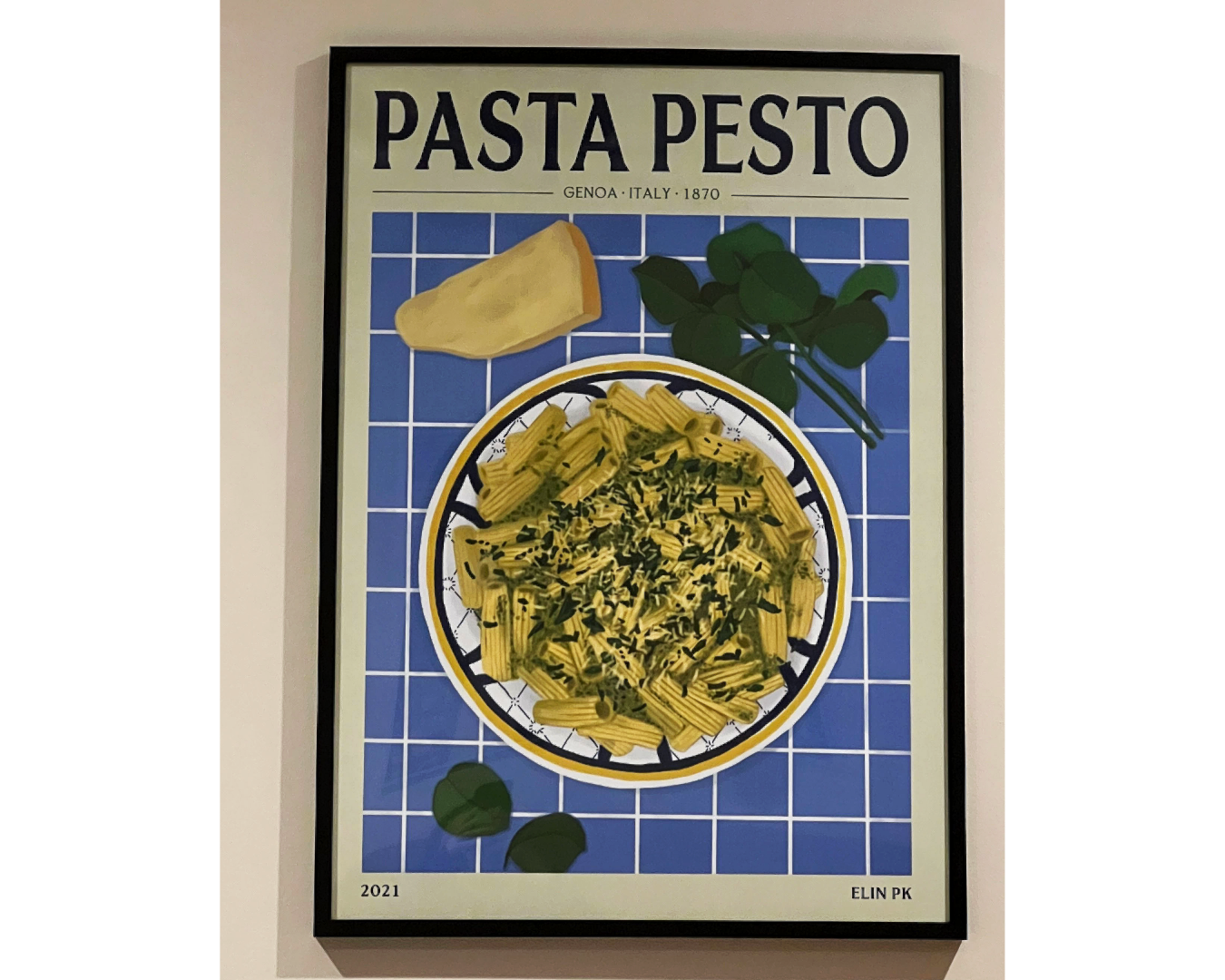
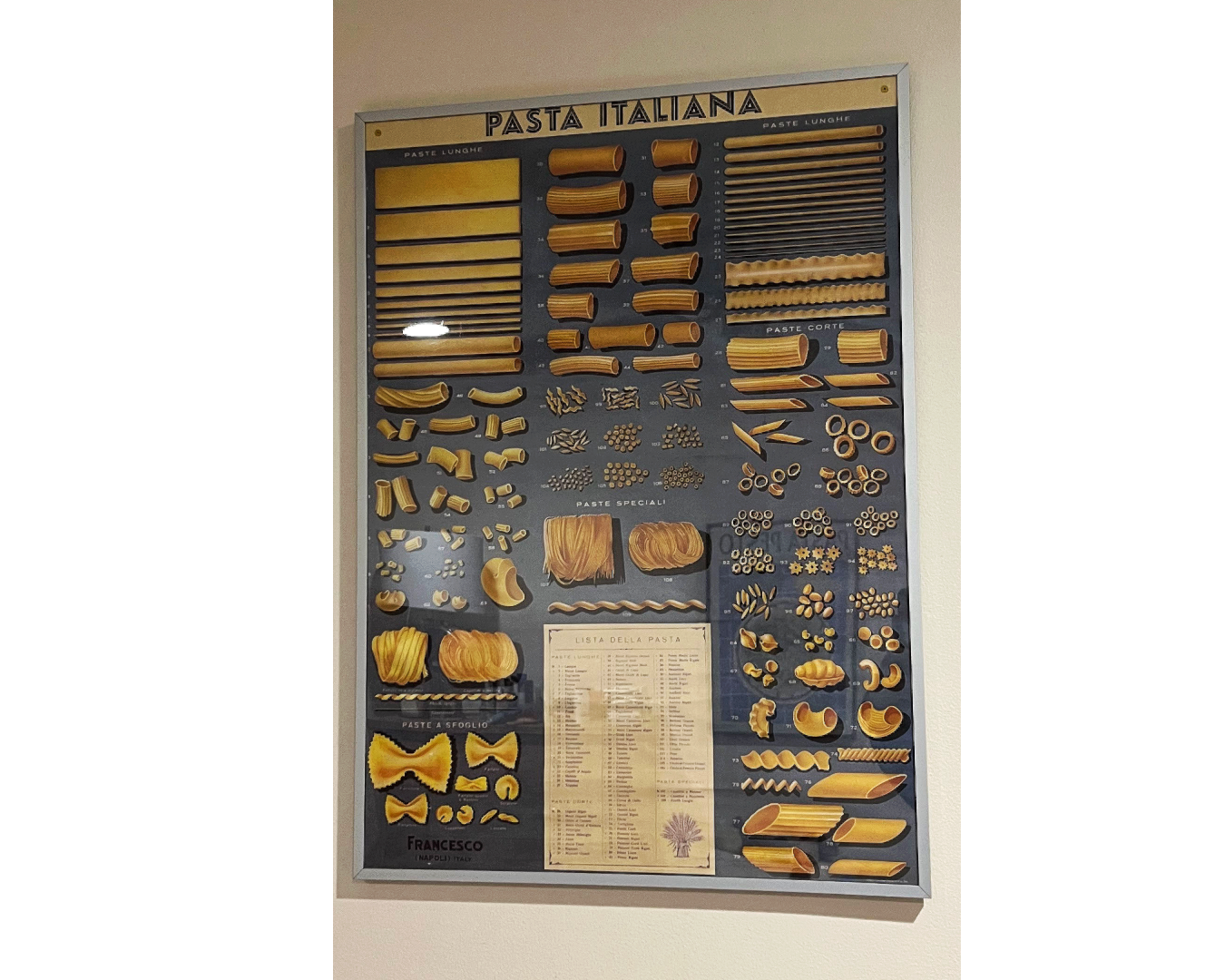
All of this is to say, when I found out my own place of work was writing an entire cookbook dedicated to my favorite category of food, I may have shed a tear or two. Containing 125 recipes from around the world, “Noodles” has quickly become my own personal bible—reminding me of an uncomplicated, satisfying truth: The beauty of noodle dishes is that most of them are dead simple.
So, I decided to set myself a challenge in the spirit of simplicity and noodles. Cook my way through the book. All 125 recipes? Unlikely, I’m only human. But I can’t think of a better way to really appreciate my favorite food group than to actually learn more about it. I figured I’d start with a staple: pesto.
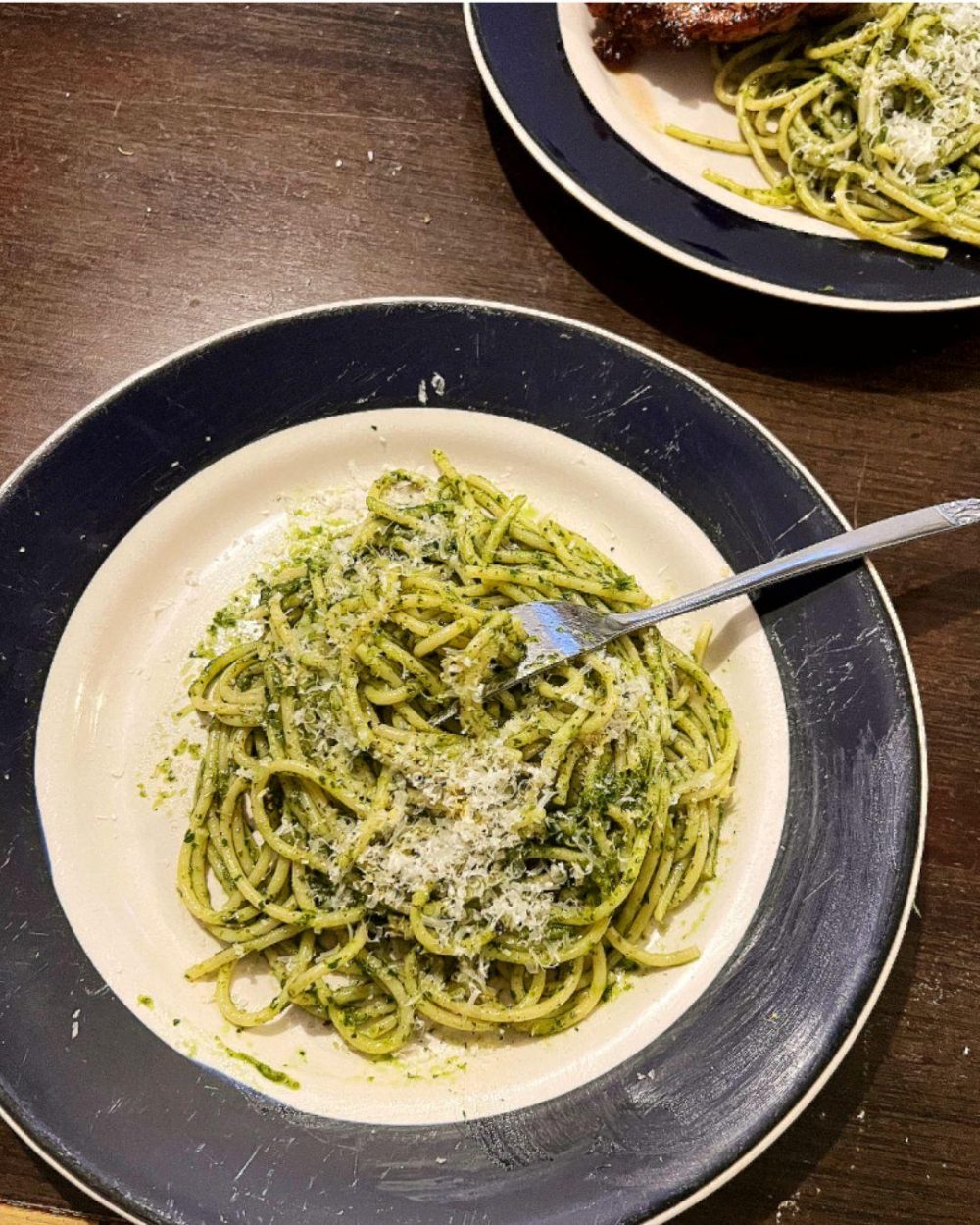
Lesson 1: Spaghetti with Parsley Pesto
Guiding Rule: A quick pesto—derived from the Italian verb “pestare,” simply, “to pound”—can be made from almost anything. Though we typically associate it with the classic basil Pesto alla Genovese, the pesto universe has few rules—encompassing everything from sun-dried tomatoes, lemon and spinach, to red peppers, olives and fennel. The possibilities are endless. But typically, (though not always), it contains a starring fresh ingredient, complemented by olive oil, garlic, and nuts.
Once you learn this simple formula, a whole new world of pesto sauces opens up.
Still, I am a pesto alla Genovese lover through and through, so I didn’t expect Spaghetti With Parsley Pesto to knock basil out of the top spot. This adaptation of a recipe Milk Street learned near the Amalfi Coast uses neither nuts nor Parmesan—instead, a very spare mixture of bright and clean parsley, punchy lemon, and salty anchovy. Could parsley, with so few supporting ingredients, really steal my heart?
Step 1: Gather the ingredients
The best part about this recipe? You may not even need to go to the store first. Requiring only a hefty bunch of parsley, one garlic clove, a punch of umami (more on this later), lemon, spaghetti and EVOO, there’s a high chance your pantry is stocked with most of these ingredients already. The shining factor in the recipe though comes from an umami richness provided by colatura di alici—an Italian fermented anchovy condiment akin to Southeast Asian fish sauce. But if you can’t get to an Italian specialty store in time, a single oil-packed anchovy fillet, rinsed and patted dry, is just as good a substitute. I went for the (slightly more cost effective) latter.
Step 2: Prep
I started by throwing a pot of water on the stove so that by the time my other ingredients were prepped, the water was boiling. And like any good cook, I also tossed in a good pinch of salt. While the water boiled, I washed my parsley and chopped off the bottom of the stems, smashed and peeled the garlic clove, zested and juiced my lemons and patted one anchovy dry. I also got a bowl of ice water prepared; perfect to shock the hot parsley to a vibrant green.
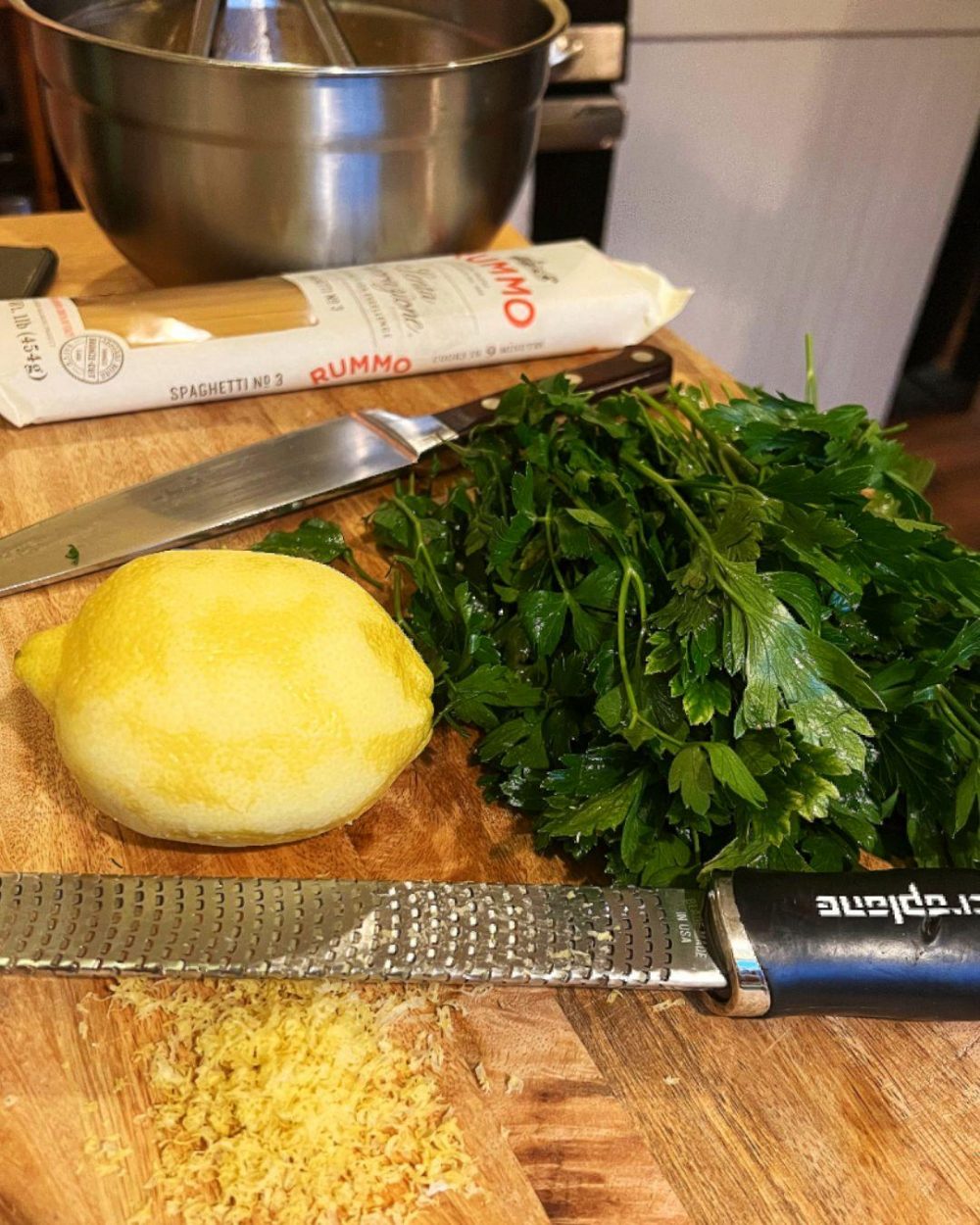
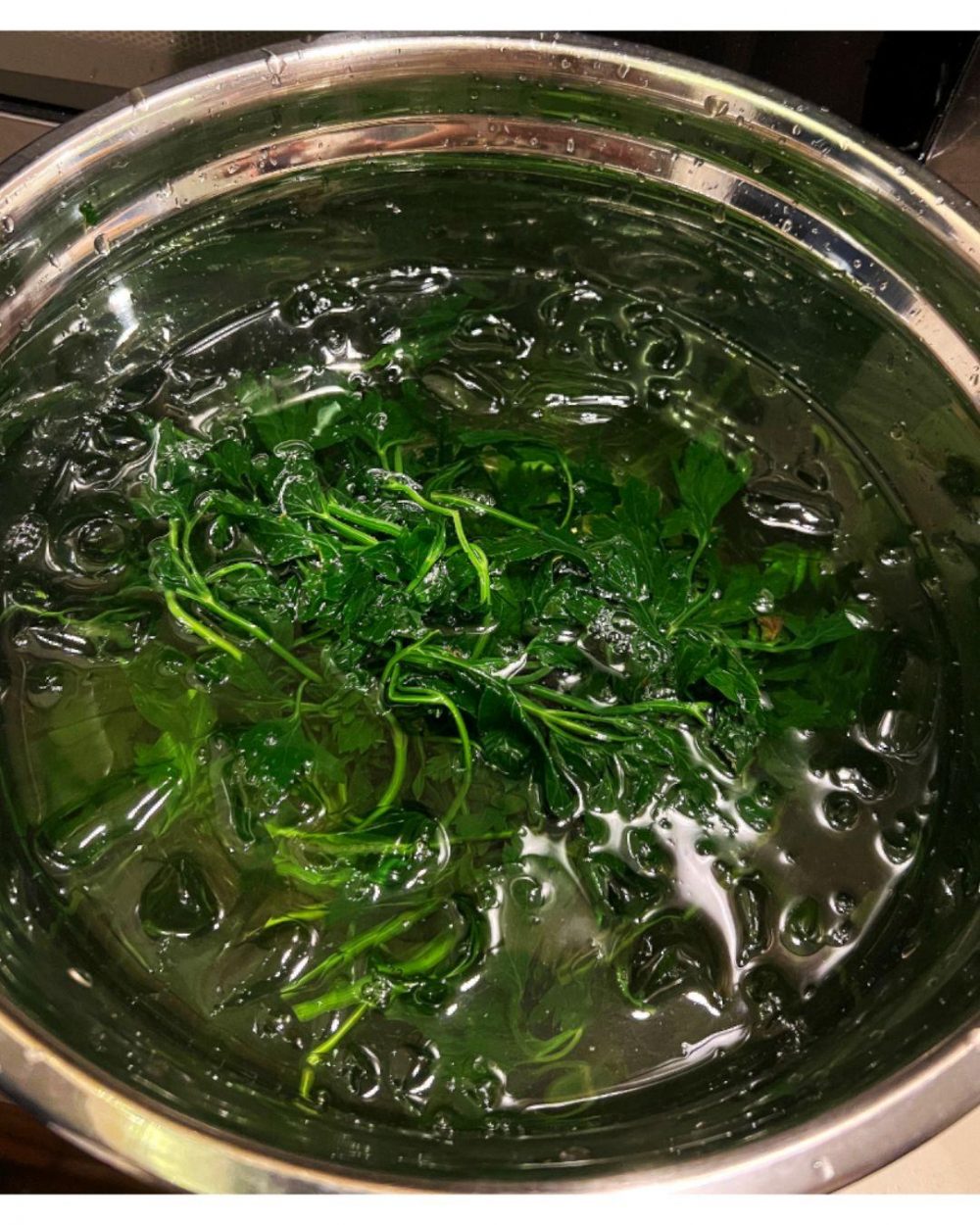
Step 3: The Blanch
Once boiling, the parsley hit the pot for just about 30 seconds. I stirred it quickly and removed the herbs with a wide strainer before transferring them straight from the hot water to the cold. Submerged in their ice bath, the herbs get to keep their bright color but are easier to break down for a silky, smooth sauce. And then I just patted them dry. How long did the whole process take? Maybe three minutes.
Step 4: Pulse the Pesto
I’m not very fancy so I don’t have a big food processor or Beast Blender, but luckily all of the sauce ingredients fit right into a single-serve blender cup. I let the mixture go for about two minutes, scraping periodically to make sure everything was well combined. A quick taste test, and one extra garlic clove later (my only deviation as a self-proclaimed garlic girl), and the pesto was done.
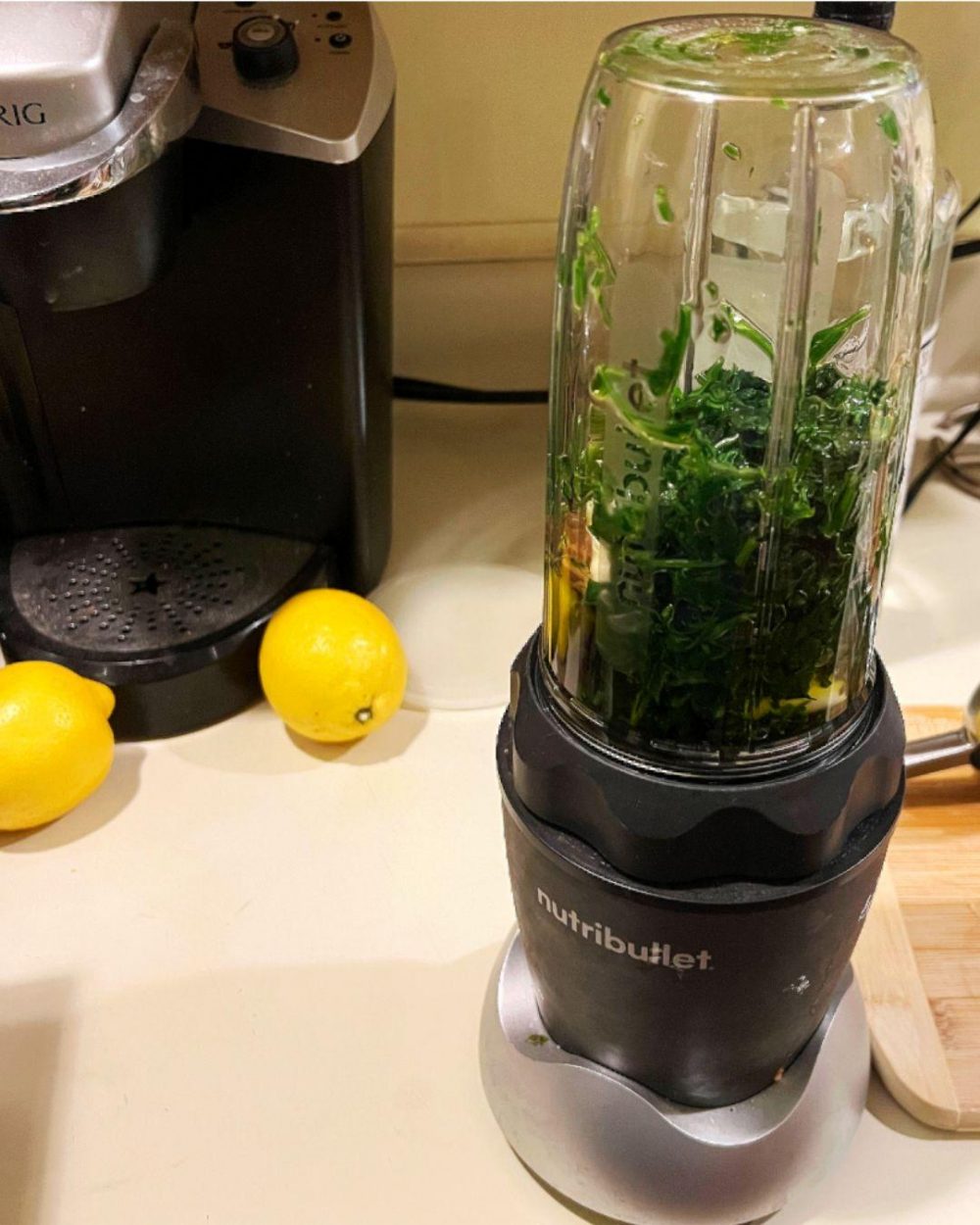
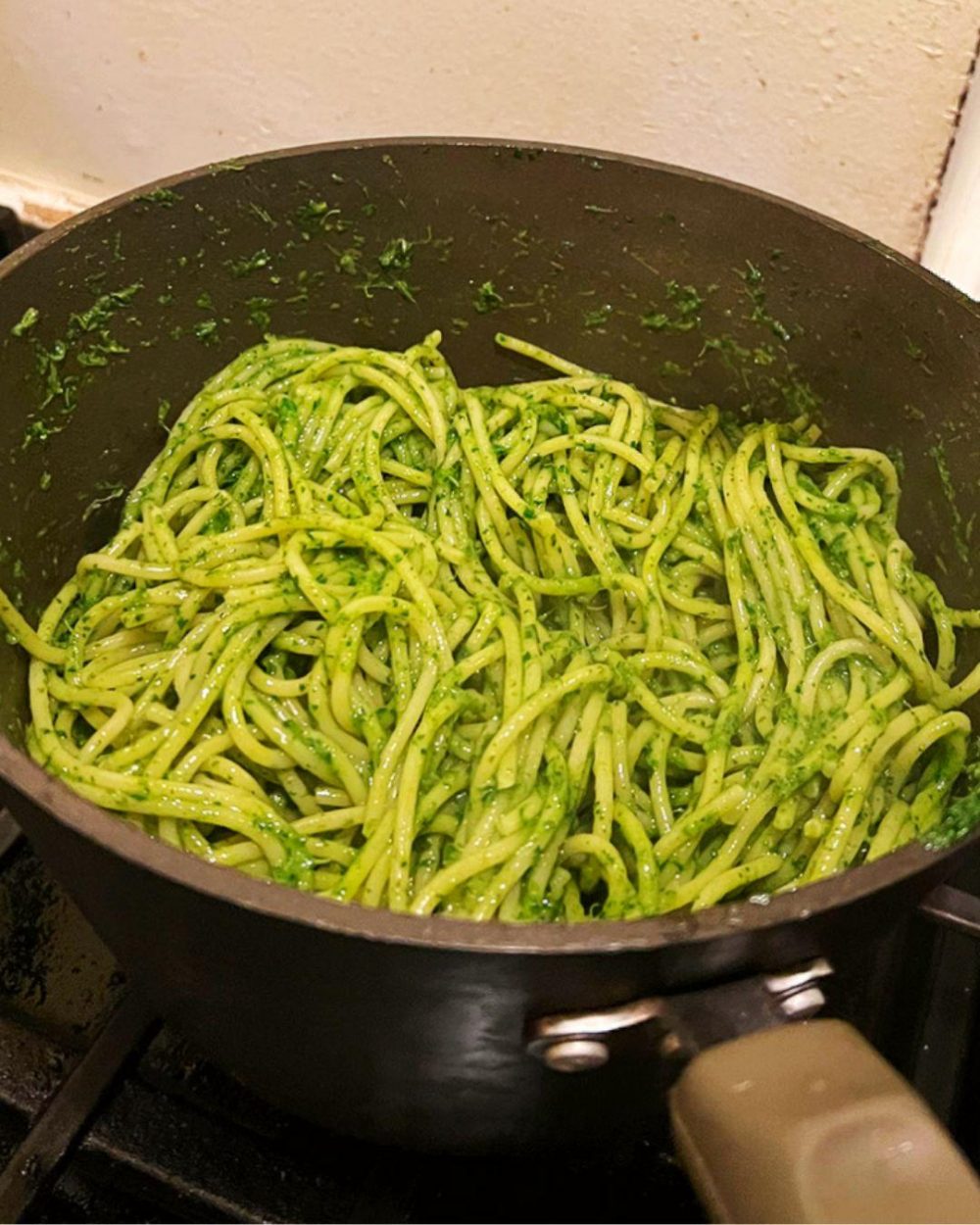
Step 5: Pasta and Plate
I used the same pot of water that the parsley went in to cook my spaghetti and added a bit more salt before letting it get back up to a boil. When the noodles were done and a good mug-full of pasta water was saved (to help create a silkier sauce for the noodles to cling to), in went the pesto right into the hot pot with the drained noodles, a bit of that starchy water, the lemon juice and zest and a hefty portion of salt and pepper. An even heftier portion of the saucy goodness went onto my plate, with an extra sprinkle of zest, a bit more black pepper, a drizzle of olive oil and a snowy layer of parm for good measure.
There are very few recipes that come along that feel worthy of three helpings. For me, this was one of them. A simple list of ingredients, a crash-course in the word pesto and a luxurious, silky-smooth end result with an emerald green hue. If this is how good everything in this book tastes, then we are all in for a treat.
And if you're looking for more Milk Street, check out our livestream cooking classes with our favorite chefs, home cooks and friends for global recipes, cooking methods and more.

Sign up to receive texts
Successfully signed up to receive texts!
We'll only send our very best offers - Like a $15 store credit to start.
By entering your phone number and submitting this form, you consent to receive marketing text messages (such as promotion codes and cart reminders) from Christopher Kimball's Milk Street at the number provided, including messages sent by autodialer. Consent is not a condition of any purchase. Message and data rates may apply. Message frequency varies. You can unsubscribe at any time by replying STOP or clicking the unsubscribe link (where available) in one of our messages. View our Privacy Policy and Terms of Service.


